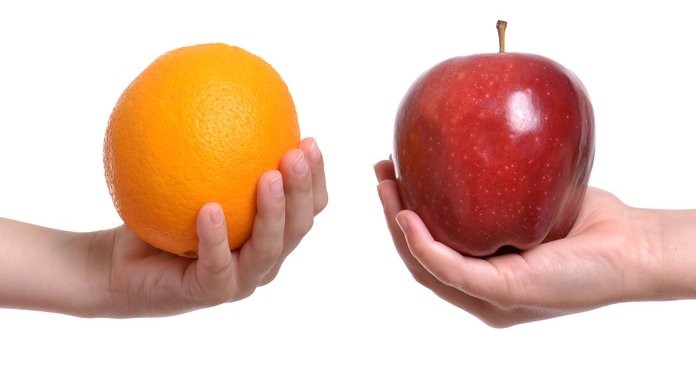
Mastering the art of the analogy can save you time, money and resources which is why successful people use them daily and understand their importance, influence an impact in the workplace. This article will breakdown what an analogy is, how it’s used and what to watch out for when applying them in the workplace.
Life is littered with memes touting one analogy after another but not all analogies are created equal and successful people understand this. Some focus on life, while others use technology, food or sports. Take a look at some of these:
- Life is like riding a bicycle. To keep your balance, you must keep moving.
- Repeating mistakes is like tripping over your own feet: avoidable with a little attention.
- I feel like a fish out of water.
- Explaining a joke is like dissecting a frog. You understand it better but the frog dies in the process.
- This is about as useful as arranging deck chairs on the Titanic.
- The day is moving slower than a snail moving backwards on a turtle moving forwards.
- Hope is like flying. You can’t see what keeps you going, but you know it’s there.
Got it? Lets move on then…
Analogies can help people make sense of technological change and other innovations. Using them effectively relies on recognizing both their benefits and pitfalls.
No one was better at this quote than the late great Steve Jobs. He coined the phrase “desktop” and made that synonymous with Apple computers. It’s become such a part of our daily vocabulary that an actual desktop can now only be associated with computers and not an actual desktop – I digress.
The Anatomy Of The Analogy
According to Wikipedia, an analogy is the “process of transferring information or meaning from a particular subject … to another particular subject.” In other words, an analogy compares one thing to another. Analogies often take the format that “A is like B” where “A” is an unknown abstract concept and “B” is something known, which is often something concrete.
A good analogy surprises you by connecting two things that you normally wouldn’t have associated together. A good analogy also provides real, applicable knowledge beyond the entertainment value.
Analogy Vs. Metaphor
There’s no doubt that many people (including myself) get stuck from time to time regarding the difference between the two. It’s a common mistake but one that should be clarified to avoid confusion of your audience and the potential poor perception of yourself. Here is the best (and easiest answer) I could find:
Analogies: compare things so that you can see a relationship between them. There are many ways to do it, but the key thing is comparing one thing to another.
Metaphors: do this by saying something “is” something else.
- That test was murder.
- The company was a sinking ship.
- The campaign is a dumpster fire.
So, analogies are comparisons, and metaphors are ways to make them.
The Benefits Of Using Analogies
Analogies can be an incredibly powerful tool, especially when it comes to teaching, and learning. Some of the many benefits when using analogies appropriately:
- Speed Up Comprehension & Reduce Learner Frustration
- Provide Visualization That Boosts Retention
- Can Easily Become Interactions
- Provide Role Reversal That Produces Empathy
- Change Perception
How To Create An Analogy
I never thought about what it took to create a good analogy until I researched and wrote this article. There are a few different theories on “how” to create one that will be both powerful and impactful. Here is what I believe the easiest to understand and utilize – it’s called the “mapping technique” and it looks like this:
Here is how it works from the original article:
- Map the characteristics between two domains and see if there are sufficient relationships to make it work (shown below). Then assess the differences between the target and the analog concepts and address the shortcomings of the analogy. Finally, evaluate the new representation.
How To Use Analogies At Work
According to an MIT article, many leaders use analogies to explain some type of change or potential transformation (context withstanding) that’s happening within their team or organization:
- Change itself is not the culprit, but rather how organizations perceive and cope with change. Both people and organizations rely on analogies to help them comprehend change, including the meaning and potential of new technologies, systems and processes.
When looking to use or create an analogy in the workplace, it’s important to remember the following:
- Be sensitive to what metaphors and mental imagery you use (i.e.: Sports analogies can be great but not if your audience doesn’t know or understand the sport in question).
- An analogy can have a property that is indirectly misleading. The property may not be a central point, but it might inadvertently cause an incorrect understanding.
- Don’t buy other people’s analogies hook, line and sinker (including this one) and consider finding alternative metaphors. Be creative and explore based on what outcome you are seeking and who you are speaking to.
- Recognize that most analogies and metaphors highlight aspects of the problem that are valid and deserving of attention.
- If no single analogy works, be open to using more than one but use your discretion so as to not confuse your audience and ensure they complement each other.
The floor is yours: What’s the best analogy or metaphor you’ve ever heard?
Please leave your comment below as your insights are greatly appreciated and a learning opportunity for everyone reading this article.
With leadership,
Joshua / www.JoshHMiller.com
Please ‘Follow’ if you would like to hear more from me in the future.




